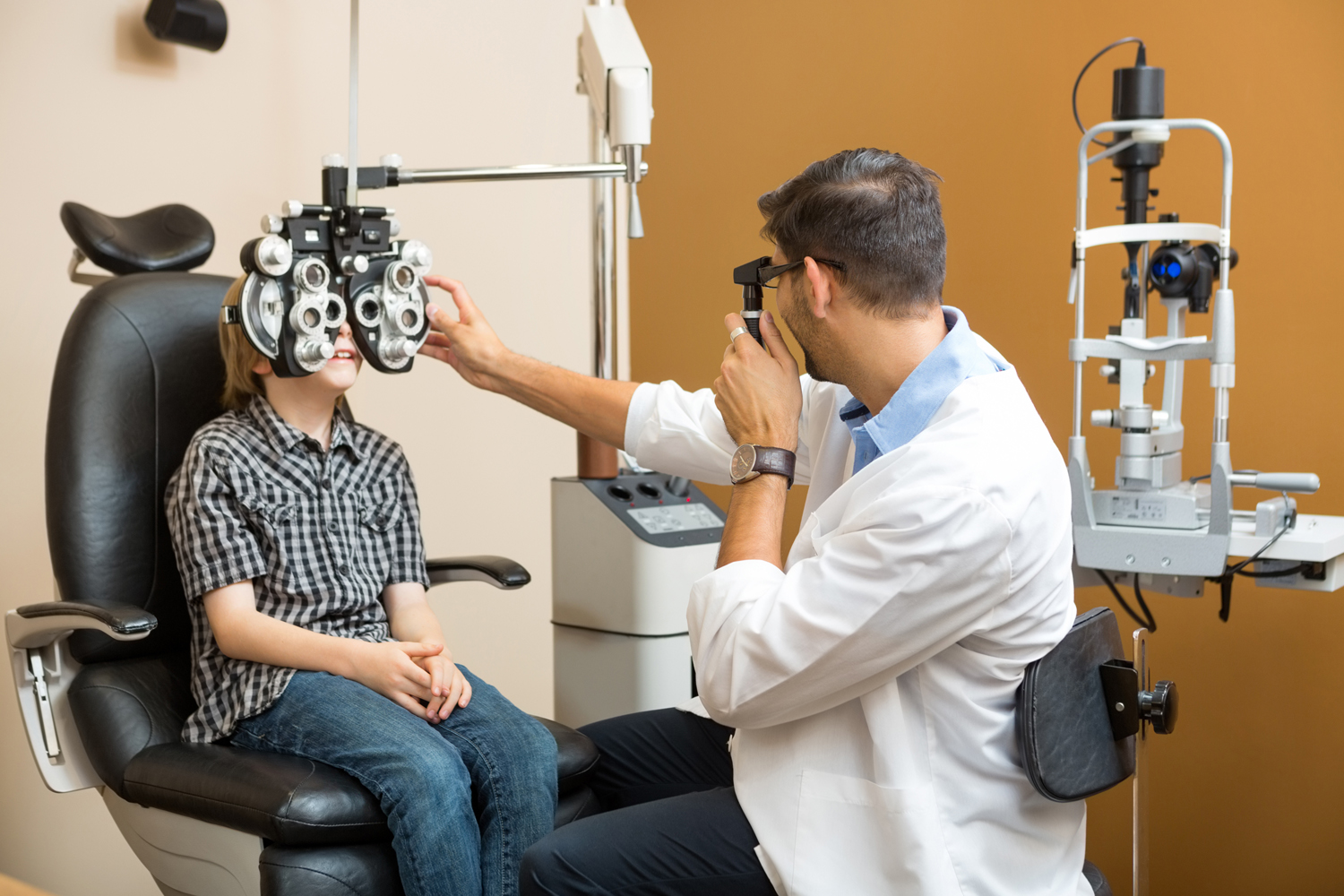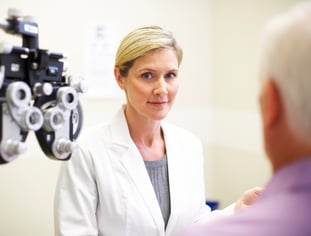Just How an Eye Doctor Can Help Avoid Vision Issues in Chino
Just How an Eye Doctor Can Help Avoid Vision Issues in Chino
Blog Article
Checking Out the most recent Technical Improvements in Optometry and What They Mean for Eye Doctors
In the ever-evolving field of optometry, current technological advancements are reshaping how professionals approach eye treatment. From the accuracy of Optical Coherence Tomography to the nuanced understandings supplied by AI-driven diagnostic tools, these innovations are establishing brand-new requirements in individual assessment and treatment. Teleoptometry is positioned to redefine availability, making sure that knowledge goes beyond geographical limitations. As these advancements permeate the practice, eye doctors are confronted with the difficulty of embracing these devices to improve client results. The question continues to be: exactly how will these technological changes redefine the duties and duties within the career?
Technologies in Diagnostic Tools
Advancing the field of optometry, developments in diagnostic tools have actually changed the method eye care experts evaluate and detect aesthetic disabilities and eye problems. The previous years has actually experienced substantial technological advancements, enabling even more extensive and precise examinations.
One more secret technology is the intro of advanced corneal topography systems, which map the surface area curvature of the cornea with accuracy. These devices are especially useful for suitable get in touch with lenses and diagnosing corneal conditions. Furthermore, electronic retinal imaging has actually transformed standard ophthalmoscopy, offering comprehensive, breathtaking views of the retina that facilitate comprehensive aesthetic examinations.
The growth of wavefront aberrometry has actually likewise been critical, enabling the evaluation of refractive errors with unmatched accuracy (Eye Doctor Optometrist). This modern technology assists in personalizing restorative lenses and boosting medical outcomes for refractive surgical treatments. Collectively, these diagnostic improvements encourage eye doctors to supply superior client care, guaranteeing early treatment and tailored treatment techniques, inevitably improving visual health and wellness outcomes
AI in Person Administration
Building on the structure of sophisticated analysis devices, the unification of artificial knowledge (AI) in person management stands for a transformative jump for optometry. AI systems are increasingly employed to boost effectiveness, precision, and customization in patient care. By evaluating large amounts of data, AI can determine patterns and predict potential ocular problems, allowing optometrists to tailor treatments more properly. This capacity is essential in handling chronic eye conditions such as glaucoma and diabetic retinopathy, where early detection and constant monitoring are vital.
Additionally, AI-driven systems assist in streamlined person communications and administrative procedures. Automated scheduling, online consultations, and customized follow-up plans not just boost patient complete satisfaction yet additionally maximize time monitoring for experts. These systems can triage individuals based on the urgency of their conditions, making certain that those in crucial demand obtain punctual attention.
In addition, AI boosts decision-making by giving eye doctors with evidence-based recommendations and treatment paths. By integrating information from digital health and wellness records, AI tools supply insights that notify medical choices, reducing the risk of mistakes and improving client outcomes. As AI remains to progress, its role in individual monitoring will likely increase, reshaping the landscape of optometric treatment.
Breakthroughs in Retinal Imaging
In the world of optometry, retinal imaging has actually experienced remarkable technical developments that are enhancing diagnostic capabilities and person care. Advancements such as Optical Comprehensibility Tomography (OCT) and fundus photography have revolutionized exactly how eye doctors imagine and analyze the retina. OCT, in certain, supplies high-resolution, cross-sectional photos of the retina, permitting the thorough assessment of its layers. This ability is vital for very early discovery and management of problems like glaucoma, diabetic retinopathy, and age-related macular degeneration.
Improved imaging methods like OCT angiography are further refining analysis accuracy. Opticore Optometry. Such improvements promote the identification of minute retinal changes that could signify disease progression.
Moreover, developments in expert system are boosting retinal imaging by enabling computerized analysis of big datasets. These systems help optometrists in recognizing patterns indicative of pathology, thereby improving diagnostic accuracy and effectiveness. Jointly, these technologies are transforming retinal imaging into a foundation of modern-day eye care, improving outcomes and increasing healing possibilities.
Teleoptometry's Expanding Role
Teleoptometry is progressively his response coming to be a crucial element of eye treatment, driven by advancements in electronic interaction and diagnostic tools. As optometry embraces electronic improvement, teleoptometry promotes remote examinations, permitting optometrists to expand their services past standard borders. This is especially beneficial in underserved and rural locations where accessibility to specialized eye care is check frequently restricted. By leveraging high-resolution video conferencing and advanced retinal imaging, optometrists can perform comprehensive eye tests from afar, ensuring prompt medical diagnosis and treatment.
The combination of synthetic intelligence (AI) more improves teleoptometry, making it possible for the evaluation of visual data and helping in the discovery of eye conditions such as glaucoma and diabetic retinopathy. AI-powered algorithms can rapidly translate complex imaging information, offering optometrists with useful understandings that reinforce scientific decision-making.
Moreover, teleoptometry sustains continuity of treatment with smooth assimilation with digital health and wellness documents (EHRs), allowing eye doctors to maintain thorough individual histories. When seeking advice from with various specialists., this makes certain that patients get constant and tailored care even.
In spite of these benefits, obstacles stay, including making certain information safety and managing client assumptions. Teleoptometry stands for a significant stride in the direction of even more available, effective, and patient-centered eye treatment. As technology advances, its role is poised to increase additionally.

Future Patterns in Eye Treatment
A myriad of ingenious trends is established to reshape the future of eye care, driven by technical advancements and the developing needs of patients. One significant trend is the combination of artificial intelligence (AI) in diagnostics, which promises to improve the accuracy and performance of eye examinations. AI algorithms can examine vast quantities of data from retinal images, possibly discovering conditions like diabetic retinopathy and glaucoma earlier than conventional techniques.
Furthermore, personalized medicine is getting grip in optometry, with hereditary testing informing personalized therapy strategies. This strategy aims to enhance person end results by tailoring treatments to individual hereditary profiles. Wearable technology, such as clever get in touch with lenses, is likewise coming up, supplying real-time tracking of intraocular pressure or glucose levels, therefore providing constant understandings right into eye and systemic health.
The adoption of enhanced truth (AR) and virtual truth (VIRTUAL REALITY) in training and individual education and learning is one more emerging fad. These innovations provide immersive experiences that can boost understanding and find skills both for clients and optometrists. As these trends advance, eye doctors have to remain abreast of technical advancements to give cutting-edge treatment, ensuring better patient end results and satisfaction in the dynamic landscape of eye care.
Verdict

Jointly, these analysis developments encourage optometrists to provide premium individual treatment, guaranteeing very early intervention and customized treatment strategies, ultimately enhancing aesthetic wellness end results.

As these modern technologies continue to advance, eye doctors must adapt and include them right into practice, inevitably optimizing process effectiveness and raising the requirement of eye care supplied to patients.
Report this page